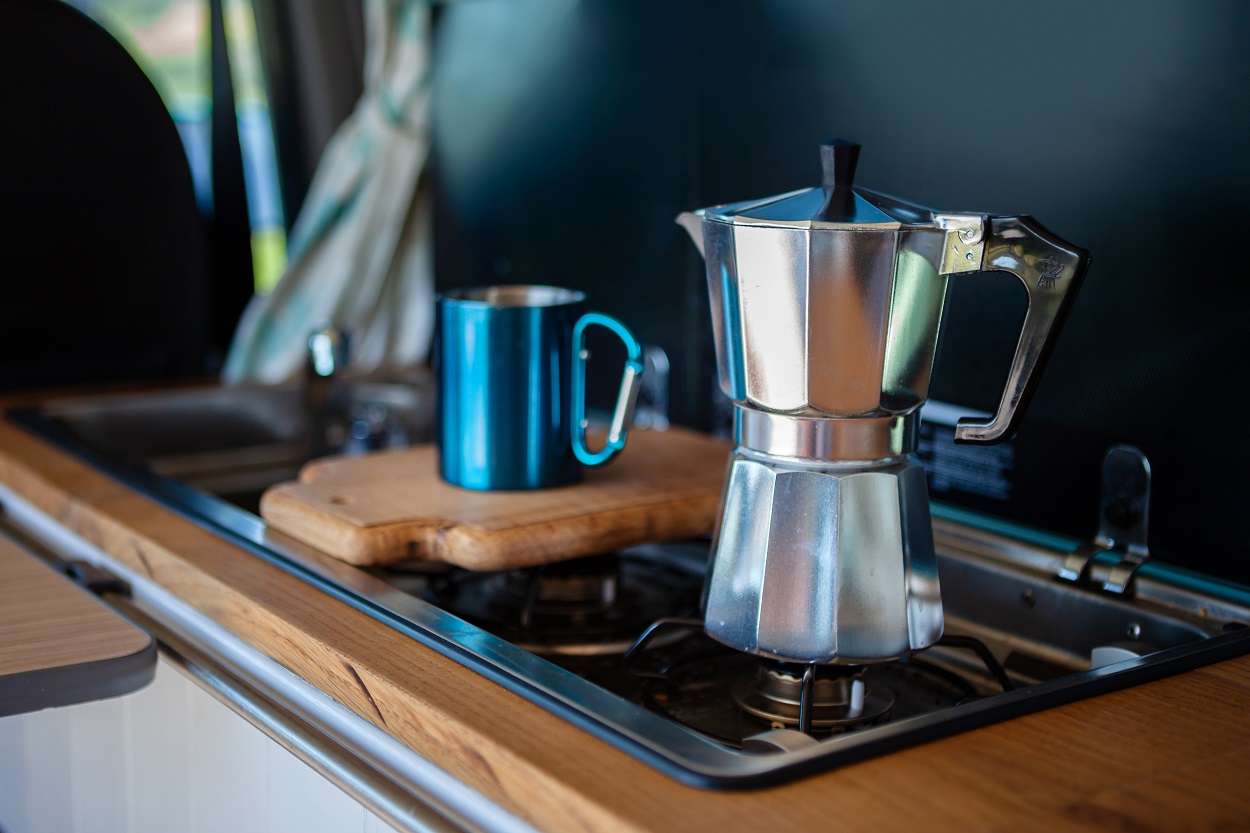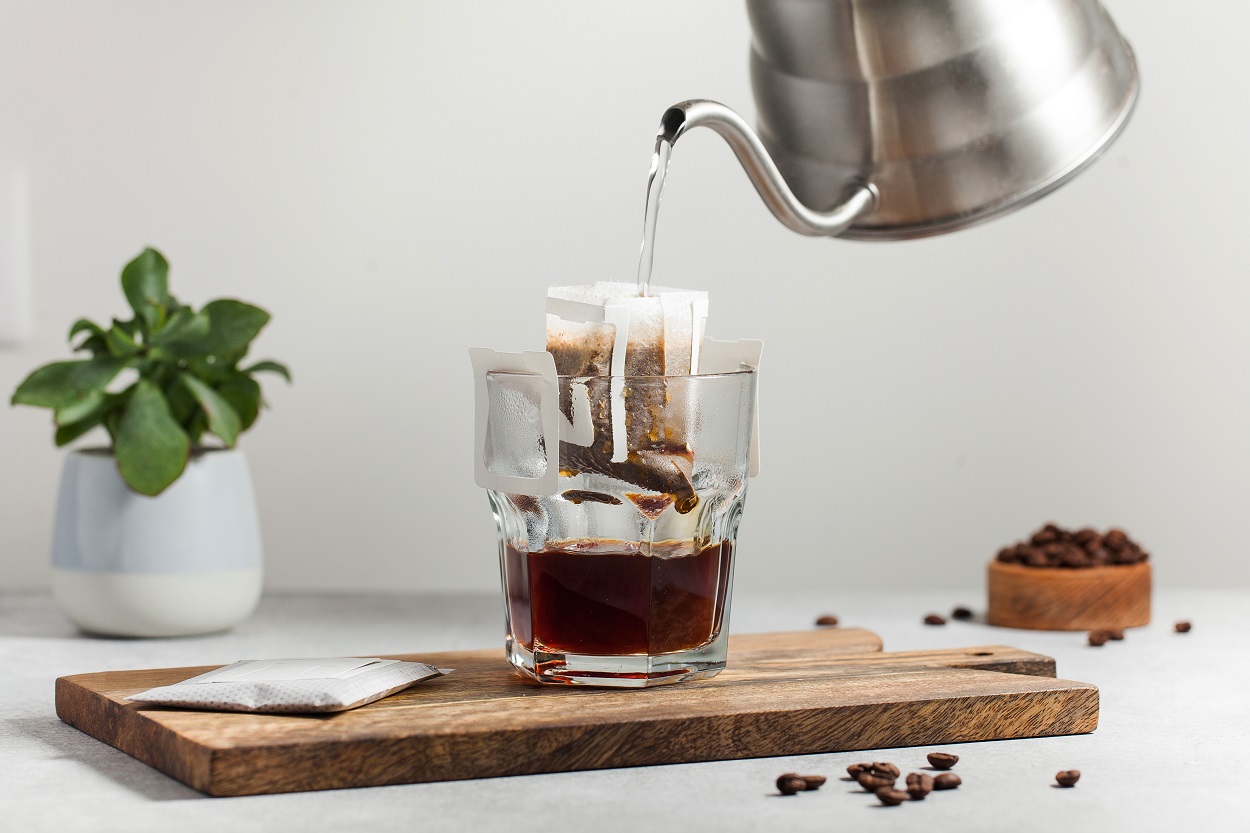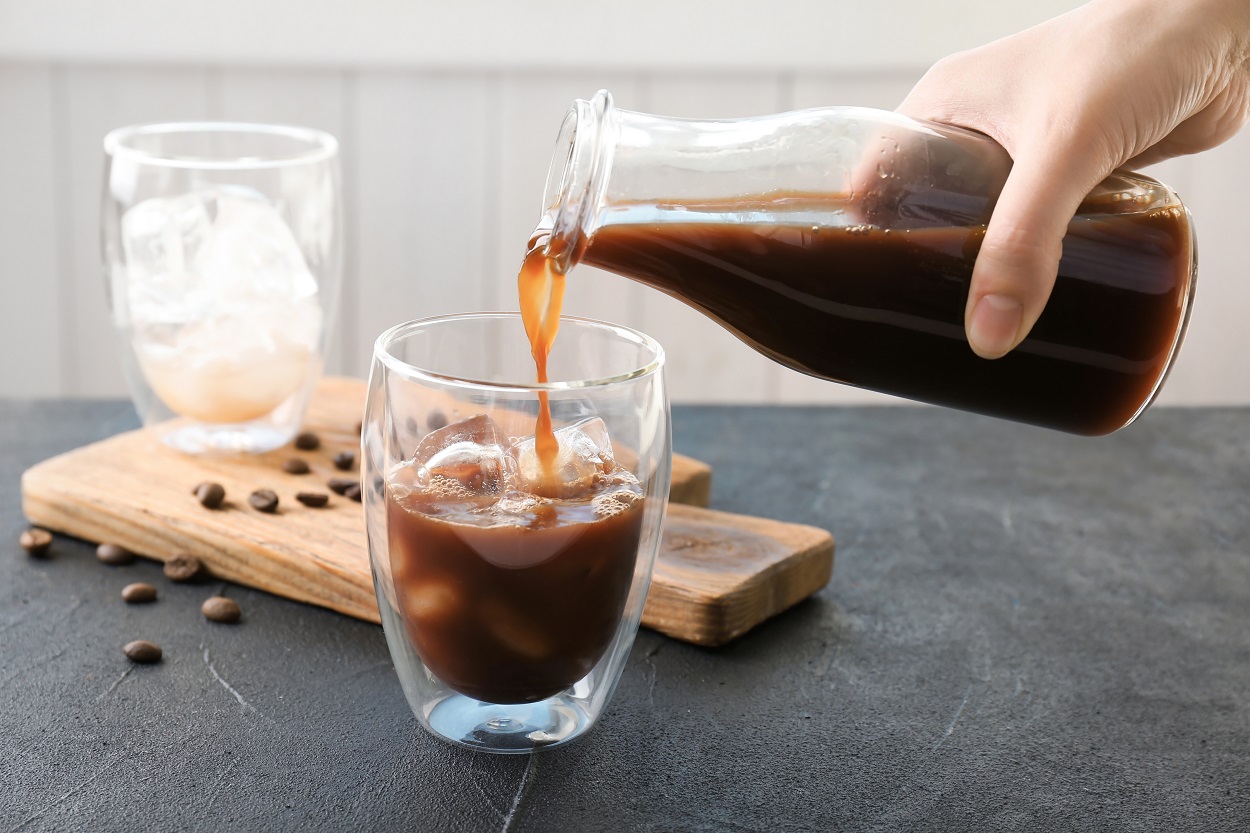
Making barista-grade coffee at home has never been easier, and there have never been more options at your disposal.
For some coffee lovers, nothing beats the raw convenience of single-serve coffee or a super-automatic espresso machine. Others insist on the complete control offered by a semi-automatic Italian espresso machine.
If you’re not the biggest fan of espresso or americano, maybe you prefer using a latte and cappuccino maker to get the long and creamy coffees you crave.
What happens if you come downstairs in the morning to discover your coffee machine is on the blink, though?
Well, fortunately you won’t need to start making Turkish coffee from scratch, and you won’t need to go without your morning coffee either.
Before we highlight some workaround for making coffee when you don’t have the right equipment to hand, a word of warning. Using any of the methods below will give you drinkable coffee, but you’re not liable to make a world-beating cup. That said, you’ll end up with your morning caffeine fix, even if you’re away from home or your coffee machine is on the fritz.
Dive in!
The Best Ways to Make Coffee Without a Coffee Maker
- Improvised French press
- Stovetop coffee
- Coffee bags
- Make your own filtered coffee
- Cold brew coffee
- Instant coffee
- Microwaved coffee
1) Improvised French press
Using a French press is one of the most popular ways of making gourmet coffee at home. While we appreciate that a French press is not a mechanical device, it’s still considered a coffee maker, if not a coffee machine.
Luckily, if you want the oily and rich brew usually associated with the French press, you can fashion a makeshift example with relative ease.
What You Need
- Fresh coffee beans
- 2 coffee mugs
What To Do
- Grind your beans to somewhere between a medium and coarse grind. The end result should be similar to table salt in terms of consistency
- Use 2 tablespoons of coffee grinds for each cup of water
- Pop the coffee grounds into one of the mugs
- Boil some water. Let this cool for 30 seconds so it’s the optimum temperature for coffee
- Pour enough water into the mug to cover the coffee grinds, and let them bloom. 30 seconds is enough
- Top up the mug with water
- Let your coffee brew for 4 minutes. If you want a weaker coffee, brew for 3 minutes, and if you want your coffee with more of a kick, allow it to brew for 5 minutes
- Next, carefully decant the coffee into the mug you’ll be drinking from. You should find the vast bulk of the coffee grounds are now at the bottom of the first mug, so make sure you do not transfer these. It helps to press down on the grinds with a spoon when decanting your coffee
2) Stovetop coffee

You can make coffee on the stovetop in a process commonly referred to as cowboy coffee.
This super-flexible approach to making coffee uses the simple principle of fresh coffee beans and off-boiling water to give you a surprisingly tasty coffee without needing a machine.
The success of failure of this method to making coffee hinges on the quality of the beans. Grind right before brewing your cowboy coffee for best results.
What You Need
- Fresh coffee beans
- Saucepan
- Stovetop
What To Do
- Grind your coffee beans to a medium/coarse grind
- Add water to a saucepan. Use slightly more than you would usually employ for brewing coffee because some water will stay behind when you’re making cowboy coffee
- Bring the water to a boil on the stovetop
- When the water is near boiling point, add your coffee. Use 2 tablespoons of grinds for each 60z of water
- Remove the saucepan from the heat and cover immediately. Let the pan sit for 5 minutes
- Remove the cover and wait for all the coffee grounds to work their way to the bottom of the pan
- Your cowboy coffee is now ready to serve!
3) Coffee bags

Using the same principle as teabags, the only difference is the contents of the bag with coffee grinds instead of tea leaves.
If you make coffee with a bag, the end result is similar to the coffee you get from Keurig machines, except you won’t need the K-Cup.
What You Need
- Coffee bags
What To Do
- Boil up some water then allow it to cool for 30 seconds
- Throw a coffee bag into a mug then slowly pour water over the bag, making certain to soak the entire bag to promote even steeping
- For weak coffee, steep for 2 minutes, for regular coffee steep for 3 to 4 minutes, and for a stronger coffee steep for 5 to 6 minutes
- Remove and discard the coffee bag and enjoy!
4) Make your own filtered coffee
Get tasty filtered coffee even if you don’t have access to a coffee machine using this nifty technique.
What You Need
- Ground coffee
- Filter
- String
What To Do
- Heat enough water for your coffee using your preferred method
- Scoop your coffee grinds into the filter
- Using some string, tightly tie the filter so no coffee grinds can escape. If you leave some spare string hanging, you can use this to remove your bag when you’re ready to drink your coffee
- Pour off-boiling water all over the bundle. Steep for 3 to 4 minutes without stirring. An extra minute or two steeping will generate a stronger coffee
5) Cold brew coffee

Starbucks might be hugely popular, but many of their coffees wildly miss the mark. We can’t the same about their fantastic big-batch cold brew coffee, though!
Fortunately, it’s very easy to recreate this alluring drink at home. All you’ll need is plenty of patience for the overnight waiting time.
What You Need
- 8oz fresh coffee beans
- Coffee grinder
- 8 cups of water (bottled or filtered)
- 2 jars (lidded)
- Rubber bands
- Cheesecloth
What To Do
- Grind your coffee beans. You want a coarse grind with the consistency of demerara sugar
- Add the grinds to one of the jars
- Add the water and then stir thoroughly. You will see the coffee start floating to the top. Ensure all of the coffee grounds are saturated
- Put the jar in the refrigerator. Cover and leave overnight, ideally for 24 hours
- Strain your coffee concentrate using the cheesecloth and rubber bands. If you are making a big batch of cold brew, you may need to strain it in several smaller batches
- Serve with ice and enjoy, refrigerating any leftovers for up to 2 weeks as an inbuilt bonus!
6) Instant Coffee

Here at Madiba we adore fresh coffee, but we are not purists to the extent we turn our noses up at instant coffee.
While you can never achieve barista level coffee with instant – it’s pre-ground, so the quality of the beans degrades quickly – you can get coffee on demand with no hassle at all.
Give yourself a treat with some of this lip-smacking americano, by far the tastiest instant coffee we have found.
What You Need
- Coffee granules
What To Do
- Boil up some water using your preferred method
- Use 1 to 2 teaspoons of coffee granules for each 6oz of water. Add these to your mug
- When the boiling water has been sitting for 30 seconds, pour this over your instant coffee granules. Stir well
- Serve with milk or creamer and sugar to taste
7) Microwaved coffee
If you are desperate for coffee and you don’t even have a kettle or stovetop to hand, you could fall back on the microwave.
This method is only for use in an outright emergency, though, but here’s what you do.
What You Need
- Freshly ground coffee
- Microwave
What To Do
- Put some water into a mug and microwave for 2 minutes on high
- Remove the mug from the microwave and add some coffee grounds. Use 1 tablespoon of grinds for each 6oz of water
- Allow the coffee to steep for 4 minutes. You should see the dregs go to the bottom
- Try your best to enjoy!
Conclusion
Well, we very much hope today’s snapshot of various impromptu techniques for making coffee without a coffee machine has given you more options for your morning joe.
Whatever method you choose, always use filtered or bottled water. This will give you a much cleaner and crisper coffee than using water straight from the faucet. Using fresh coffee beans ground just before brewing will also make a significant difference to the quality of the coffee in your cup. Get these aspects right and you’ll notice an improvement in the coffee you’re drinking.
Take a moment to bookmark Lolita before you go and pop back soon as we continue our in-depth dive into the world of coffee. See you soon!

